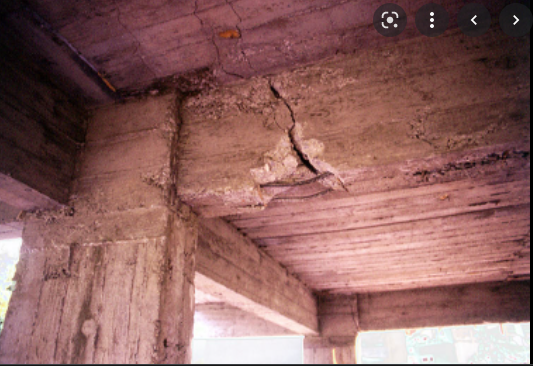Repair material should be selected with a thorough study of various properties. Following are the major criteria that should be checked before the selection of the repair material.
- Low Shrinkage
The repair material essentially has low shrinkage. If material undergoes shrinkage after setting then it will create additional unwanted stresses at the place of repairing and in addition to that there will be chances of failure. - Requisite Setting and Hardening Properties –
The setting time for the binding material should preferably be lower. This could allow occupants and users early use of the structure. However, in some cases, it is also desirable to have slow hardening property. - Workability –
Repair material should be adequately workable to ensure the best quality of workmanship.
Read Also on Measuring the Workability of fresh Concrete - Bond with Substrate –
Repair material have desirably good adhesive property so that it bonds with the original structure. This will ensure the transfer of stress through the repair material efficiently.
Also, it will ensure a water-tight joint. - Compatible Co-efficient of Thermal Expansion –
The coefficient of thermal expansion of the repair material and the structure should be the same. If the coefficient of thermal expansion is different for both the material and the structure then whenever temperature will change, the repair material will undergo additional stress. - Compatible Mechanical Properties and Strength –
When it comes to mechanical properties hardness and strength are of concern. The repair material has the same or sometimes slightly better strength and hardness than the base material.
This will ensure smooth flow of stresses in the structure.Say for example the strength of concrete to repair element which has strength M20 should not be less than M20 nor more than M30. - Relative Movement (if expected)
Particularly when we tend to repair the expansion joint it is desirable that repair material allow relative movement. - Minimal or No Curing Requirement –
This property gives early access to the structure for the users. Also sometimes it is not possible to cure the structure because of its orientation. - Alkalinity
When it comes to repairing concrete or RCC structures, the chemical properties of the repair material should be compatible. It is desirable that the material is alkaline won’t harm the concrete. This will lead to the surety of prevention of corrosion of reinforced steel. - Low Air and Water Permeability –
One of the most useful properties of repair material as far as the concern of both serviceability and durability is low permeability. If repair material is permeable then there are chances of water leakage and dampness. Not just this but it will also pose a question of durability. - Aesthetics –
Repairing the structure should not spoil the original beauty of the structure. After repair, the structure should give a pleasant appearance as before repair. - Cost –
Low cost is one of the most desirable properties for the repair material. At the same time, the performance of the material should not be compromised. - Durability and Non-Biodegradability –
The material used for repair should be durable enough so that it can withstand environmental extremities and other chemical attacks to which it is prone. - Non-Hazardous / Nonpolluting –
The Repair material should not harm the workers and users of the structure. However, wherever the use of toxic material is unavoidable, the proper safety of workers and users should be of concern.Also, it is desirable that the repair material is eco-friendly.
You may like to read the following articles-
Grades of Concrete and Mix Ratio
Most useful civil engineering software for day-to-day use
CPWD Handbook on Seismic Retrofitting of RCC Buildings [PDF]
CPWD Handbook on Repair and Rehabilitation of RCC Buildings [PDF]
